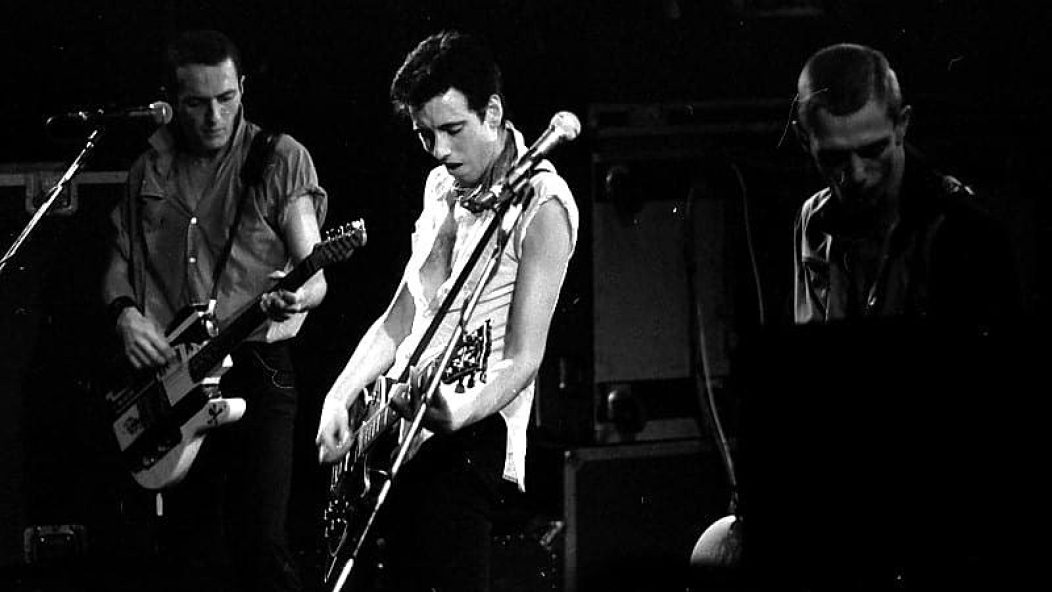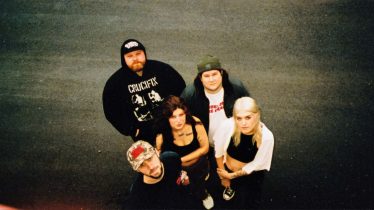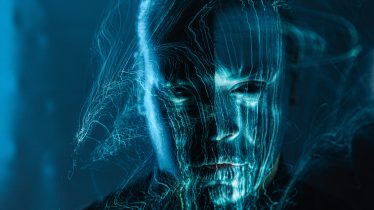
15 punk-rock albums of 1979 that still rule four decades later
By 1979, punk was firmly established. Seemingly, a million new bands formed weekly, releasing great singles seconds later. But some of the old guard were starting to feel constrained by angry teenage ramalama. Where else punk could go? These are the best punk-rock albums of 1979.
As bands such as the Clash and the Damned expanded their vision, newer bands came along, acting like it was still 1977. And they were good. Other acts expanded on punk’s remit, playing artier sounds infused with modern energy. Meanwhile, a harder, faster variant on old-school punk was brewing in Los Angeles, about to overtake the entire American scene for the next two years. The Germs would be spreading the hardcore gospel. However, it would be the Clash who’d release the best punk-rock album of 1979, right at year’s end.
- The Clash – London Calling
No one matured like the Clash on their third LP. Now favoring a rockabilly look, they matched it with a scrappy rendition of ’50s U.K. icon Vince Taylor’s “Brand New Cadillac” and other American roots music—zydeco (“Jimmy Jazz”), R&B and soul (“Lost In The Supermarket”) and even Phil Spector’s Wall Of Sound (“The Card Cheat”). Reggae pulsed through “Rudie Can’t Fail” and “The Guns Of Brixton,” while “Clampdown” and the title track proved the Clash were still punk. Keyboards and horns abounded, and Joe Strummer’s gruff bark gained a newfound expressiveness. Mick Jones snuck in a Motown-inflected breakup song, “Train In Vain,” soon their first American hit. Epic Records embarrassed them, branding them “the only band that matters” on a promo sticker. Listening to London Calling, it’s hard to argue. - Stiff Little Fingers – Inflammable Material
“They make us feel indebted/For saving us from hell,” singer Jake Burns tonsil-shreds over a riff cribbed from Montrose’s “Space Station #5,” an artifact from Stiff Little Fingers’ heavy-metal past as Highway Star. “And then they put us through it/It’s time the bastards fell!” “Suspect Device,” rerecorded from the Belfast quartet’s debut 45 for Inflammable Material, displayed a more potent and humane political punk. Equal amounts of Irish warmth and melodicism scattered through these raw screams, born of advice manager Gordon Ogilvie offered Burns: “Write about what you know.” Hence the Troubles fueled “State Of Emergency” and “Barbed Wire Love.” Add “Breakout,” the first of many compositions dealing with small town constraints, a la “Gotta Gettaway” and “At The Edge.” The Clash obviously inspired SLF, down to rocking up Bob Marley’s “Johnny Was.” Forty-one years later, Inflammable Material still screams.
- Joy Division – Unknown Pleasures
The future enters, riding a relentless bassline. Spawned by the legendary June 4, 1976 Sex Pistols gig at Manchester Lesser Free Trade Hall which catalyzed Buzzcocks, the Fall, the Smiths, Factory Records and everything else punk in that city, Joy Division themselves—as Warsaw—seemed content initially to ape the Pistols. Then they deconstructed their songs, experimenting with more of a motorik pulse, as singer Ian Curtis had a nervous breakdown through every song. Add in Martin Hannett’s unorthodox production, including extensive, then-novel use of digital delay, and post-punk’s born, as slinky as Curtis’ epileptic seizure dances onstage (developed out of personal experience). A classic punk-rock album.
- The Damned – Machine Gun Etiquette
If you thought the Clash grew, check out the Damned’s doings in the studio next to where London Calling was tracked. By third LP Machine Gun Etiquette, they’d dissolved, reformed and lost founding guitarist/songwriter Brian James. Bass lunatic Captain Sensible moved to guitar, writing several tunes by recording television commercials and playing the jingles backward. While “Love Song” and the title track were as aggressively punk as “New Rose,” the band experienced a certain musical wanderlust. Hence, Sensible indulged all the lead guitar he’d learned as a teenage Santana fan, still rendering it chaotically. Keyboards drove “I Just Can’t Be Happy Today” and “Smash It Up.” Hints that these guys weren’t ashamed of their prog records abounded.
Read more: Gang Of Four guitarist Andy Gill dies at 64
- Gang Of Four –- Entertainment!
“The thinking man’s Clash,” critic Greil Marcus dubbed these four university students from Leeds, U.K. Certainly, Gang Of Four were leftist enough to resemble members of the same genus as the Clash, though they were funkier and noisier. Drummer Hugo Burnham and bassist Dave Allen beat to shit Funkadelic rhythms. Recently deceased guitarist Andy Gill sounded like he threw his Fender down a staircase and cranked the amp loud. Singer Jon King recited polemics such as “Love Like Anthrax” and “At Home He’s A Tourist” almost clinically. Tense, minimalist and danceable, Entertainment! sonically resembled those moments during GoF live sets where Gill would run full pelt into King and bounce off him. Yeah, that good.
- Germs – (GI)
The first hardcore LP, no shit. For two years, the Germs publicly learned their instruments—drummer Don Bolles auditioned 30 minutes after receiving his first drum lesson. By the time Joan Jett herded them into the studio (and supposedly passed out for much of the sessions, according to lengthy “blues” jam “Shut Down (Annihilation Man)”—some have whispered that engineer Pat Burnette produced more than the ex-Runaway), Bolles, guitarist Pat Smear and bassist Lorna Doom were a fearsome outfit, blazing at fire-breathing tempos that made the Ramones sound slower than Black Sabbath. (GI) cranked the entire West Coast to thrash-o-matic velocity. Factor in the revelation that doomed, more-Iggy-than-Iggy frontman Darby Crash was a poet of considerable power and you have one of history’s most definitive hit-and-run punk full-lengths.
Read more: Top 15 punk LPs of 1977 that undeniably defined the year
- Buzzcocks – Singles Going Steady
This compilation of Buzzcocks’ eight 45s released to date in the U.K.—the A-sides presented chronologically on Side 1, with the flipsides on the reverse—was assembled by U.S. label I.R.S. to coincide with Manchester’s punk-pop pioneers’ first American tour. But because these were Pete Shelley’s best songs, interspersed with some of guitarist Steve Diggle’s finest, it’s a really strong LP; Meet the U.S.’ introduction to Buzzcocks’ charming, speedy chainsaw pop, including the World’s Most Perfect Song, “Ever Fallen In Love (With Someone You Shouldn’t’ve).” This best-of’s, in fact, arguably their best album. - The Specials – The Specials
Reggae was U.K. punk’s go-to rebel sound. It’d been embedded into Britain’s consciousness for years via the chart-busting singles Trojan Records imported from Jamaica, as well as the periodic Tighten Up compilations. So it was natural that the Clash leavened their power chords with island riddims, DJ Don Letts spun his dubplates down at the Roxy and the former Coventry Automatics sped up Jamaica’s earliest pop sound—ska—to punk specs. They also folded in the Clash’s social realism and Roddy Radiation’s post-Thunders guitar into a sound that captured more kids’ imagination in 1979 than punk. The 2 Tone bands, of which the Specials were the spearheads, had huge hits and inspired fashion and racial theory with their mixed casts. ’Twas possibly punk’s sweetest legacy.
Read more: Green Day fans really need to hear these 10 records
- Buzzcocks – A Different Kind Of Tension
The same month America got Singles Going Steady, England received Buzzcocks’ third full-length. Much distinguished it. For one, the production predated modern cut-and-paste digital audio workstation methodology by 20 years. Rhythm section loops—on tape—were recorded and then painstakingly assembled into full takes for Shelley and Diggle to drop guitars and vocals atop. But songs such as “Hollow Inside” and “I Believe” reflected Shelley’s rapidly disintegrating psyche, splintered by his escalating LSD consumption. This also contains the last classic Buzzcocks single, “You Say You Don’t Love Me.”
- The Slits – Cut
Like the Germs, the entirely distaff Slits spent two years proudly learning in public. By the time Island Records pulled the trigger, singer Ari Up, bassist Tessa Pollitt and guitarist Viv Albertine’s scratchy skronk was only punk in attitude, now favoring the deepest reggae. Hence, U.K. dub master Dennis Bovell came along to man the mixing board. Cut-and-paste hit “Typical Girls” bordered on punk-pop, while vintage roars such as “Shoplifting” and “So Tough” now oozed like the most subterranean dub. Dressed in an iconic sleeve depicting the bare-breasted Slits covered in mud, Cut‘s one of the cobblestones paving the road to post-punk.
- The Ruts – The Crack
Was it possible for face-smashing pogo rock to equally encompass musical subtlety? Second-wave gems the Ruts certainly could. They not only encompassed the now-de-rigueur reggae/punk crossover on tunes such as “Jah War” but rocked furiously through hits such as “Babylon’s Burning” and melodic anthem “Something That I Said.” They were fierce in their political commitment, playing many Rock Against Racism gigs and speaking out against England’s stop-and-search laws in “S.U.S.” The Crack bristled with promise, but then 1980 follow-up 45 “West One (Shine On Me)” astonished in its majesty. Charismatic singer Malcolm Owen’s heroin habit destroyed the band literally after its release with an overdose. It makes you wanna scream.Read more: Green Day are punk’s greatest band and we have the magazine to prove it
- UK Subs – Another Kind Of Blues
Musical subtlety hardly concerned second-wave Britpunk’s greatest band, UK Subs. 30-something ex-hairdresser singer Charlie Harper and his three bondaged-trousered friends sustained a fundamentalist pogo roar. Their debut LP, Another Kind Of Blues, initiated the Subs’ lengthy career and string of alphabetically named LPs, featuring aggressive shoutalongs such as “C.I.D.” and “Stranglehold.” Harper and his ever-changing lineups’ became punk’s AC/DC—relentlessly rigid musically and somehow finding something fresh and exciting in the row they’d keep plowing.
Read more: The top 15 punk albums of 1978 that still rock today
- The Undertones – The Undertones
The Undertones emerged from Derry, Ireland, with adolescent vigor and a knack for a cracking tune. They penned Earth’s Greatest Single Not Named “Ever Fallen In Love”: “Teenage Kicks,” the song influential U.K. DJ John Peel insisted be his epitaph. With a debut that killer, there was no way these five could follow it up. They sure tried hard, though. Their debut LP surrounds “Teenage Kicks” with 15 slices of the most perfect punk-pop made, with hard-charging yet frothy fare such as “Jimmy Jimmy,” “Get Over You” and “Here Comes The Summer.” Singer Feargal Sharkey bleats like a sheep, brotherly guitarist bookends John and Damian O’Neill surround him in a cloud of tangy distortion and the Billy Doherty/Michael Bradley rhythm section keeps the grooves tough and propulsive.
- Ramones – It’s Alive
The band who taught the Undertones (and likely every other punk band) all they know was ensconced in Hollywood’s Gold Star Studios with Wall Of Sound auteur Spector, going insane as he listened to the opening chord to “Rock ’’ Roll High School” ad infinitum. As a stopgap en route to End Of The Century—at least in the U.K.—all 28 tracks recorded at the Ramones’ New Year’s Eve 1977 gig were pressed as a double LP and titled after a popular contemporary horror film. As with Cheap Trick At Budokan, released the same year in the U.S., It’s Alive is a contender for Greatest Live Rock ’N’ Roll Album Ever. - Blondie – Eat To The Beat
Blondie began the year with their first U.S. No. 1 single, their Eurodisco pastiche “Heart Of Glass.” It made instant superstars of Debbie Harry and crew and fueled accusations of selling out among their CBGB peers. Parallel Lines, the 1978 accompanying LP, should’ve dispelled these notions with manic pop thrills such as “Hanging On The Telephone” and “One Way Or Another.” October 1979’s Eat To The Beat killed the sneers dead. For one thing, it opened with Blondie’s most punk moment, “Dreaming,” hinging on Clem Burke’s massive Keith Moon-esque drums and Chris Stein and Frank Infante’s power chords. Some of their most sinister rockers, such as “Accidents Never Happen,” also live on these grooves. This is Blondie’s peak.








